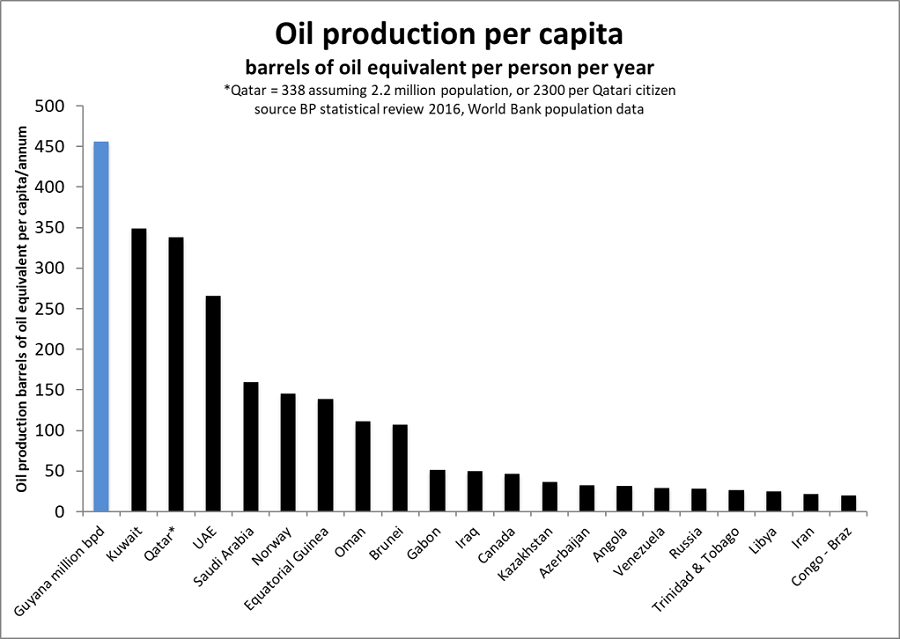On August 30th Exxon announced the ninth discovery offshore Guyana at the Hammerhead-1 well, adding to the resource base of 4 billion barrels of oil equivalent found since the Liza discovery in 2015. Liza is expected to be onstream in 2020 and there was already the potential for Guyana to reach 750 thousand barrels a day by 2025. The significance of Hammerhead is that it opens a new play in sandstone reservoirs of Tertiary age, younger and distinct from the previously successful Cretaceous aged reservoirs in the Liza sandstone play and Ranger carbonate plays. The new Tertiary play opens the pathway for the emergence of a possible 10 billion barrel plus province, second only in its scale as a new emerging province this century to the Pre-Salt of Brazil. What is also remarkable is that Guyana has a population of only 800,000 people.
This scale of resource could support a plateau production level of over a million barrels a day for a decade or more. One million barrels a day of production would equate to 456 barrels per citizen per year, which would make Guyana the world’s biggest per capita oil producer. At $70/barrel this level of production would generate US$32,000 per capita of gross annual oil revenue, before costs and oil company profits. With a current GDP per capita of US$4,750, Guyana faces an extreme transformation in its fortunes.
The opportunities for Guyana and the challenges it face are huge in equal measure and its peer top 10 per capita oil producers, such as Kuwait, the UAE, Norway, Equatorial Guinea and Gabon are ones they can learn lessons from – for better and for worse. Meanwhile, the oil companies in Guyana, especially Exxon, CNOOC and Hess must work out their role in supporting the transformation of resources of this scale into sustainable development.
Keith Myers, President, Research
[email protected] or +44 (0)20 3794 5383





